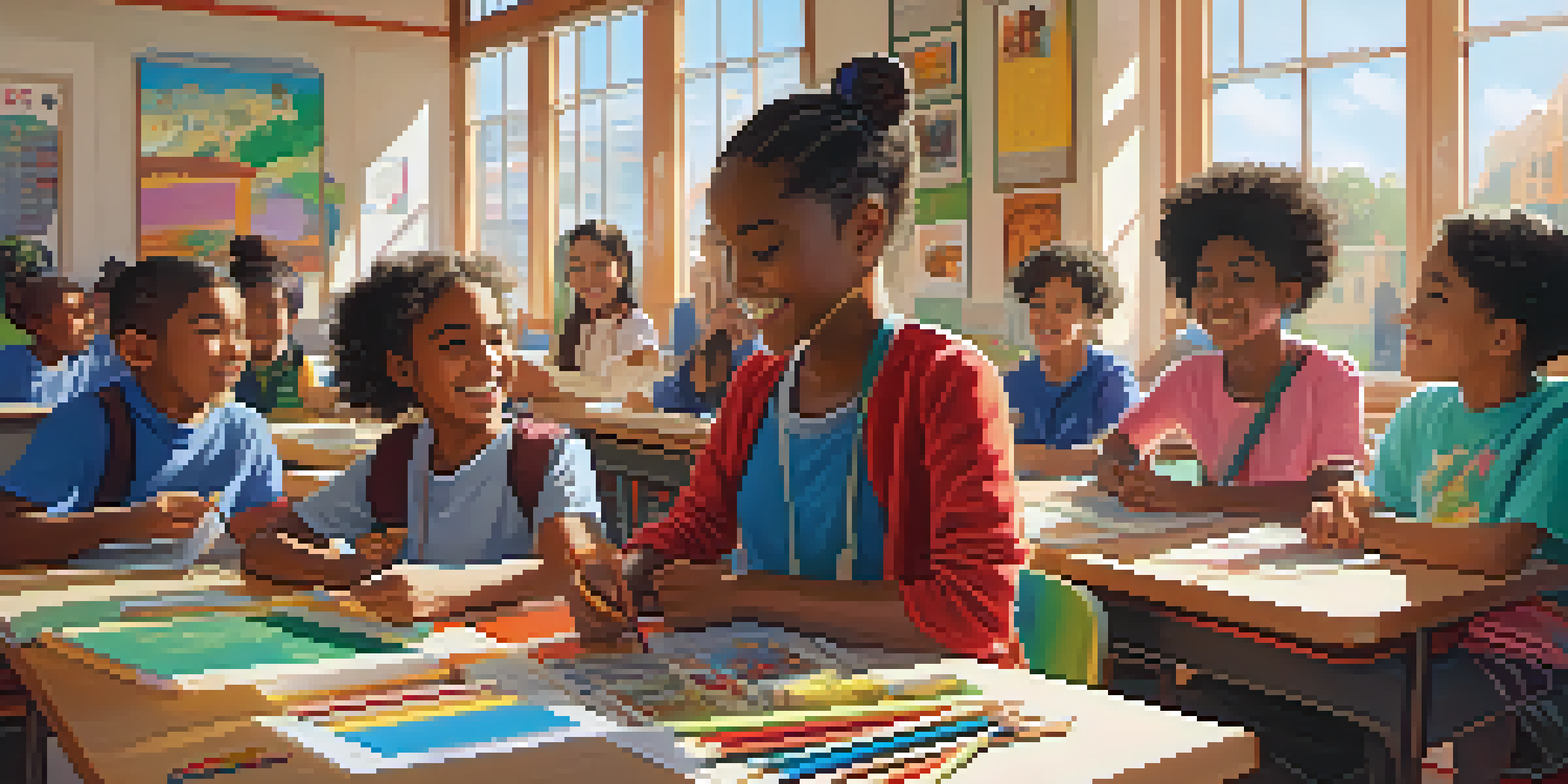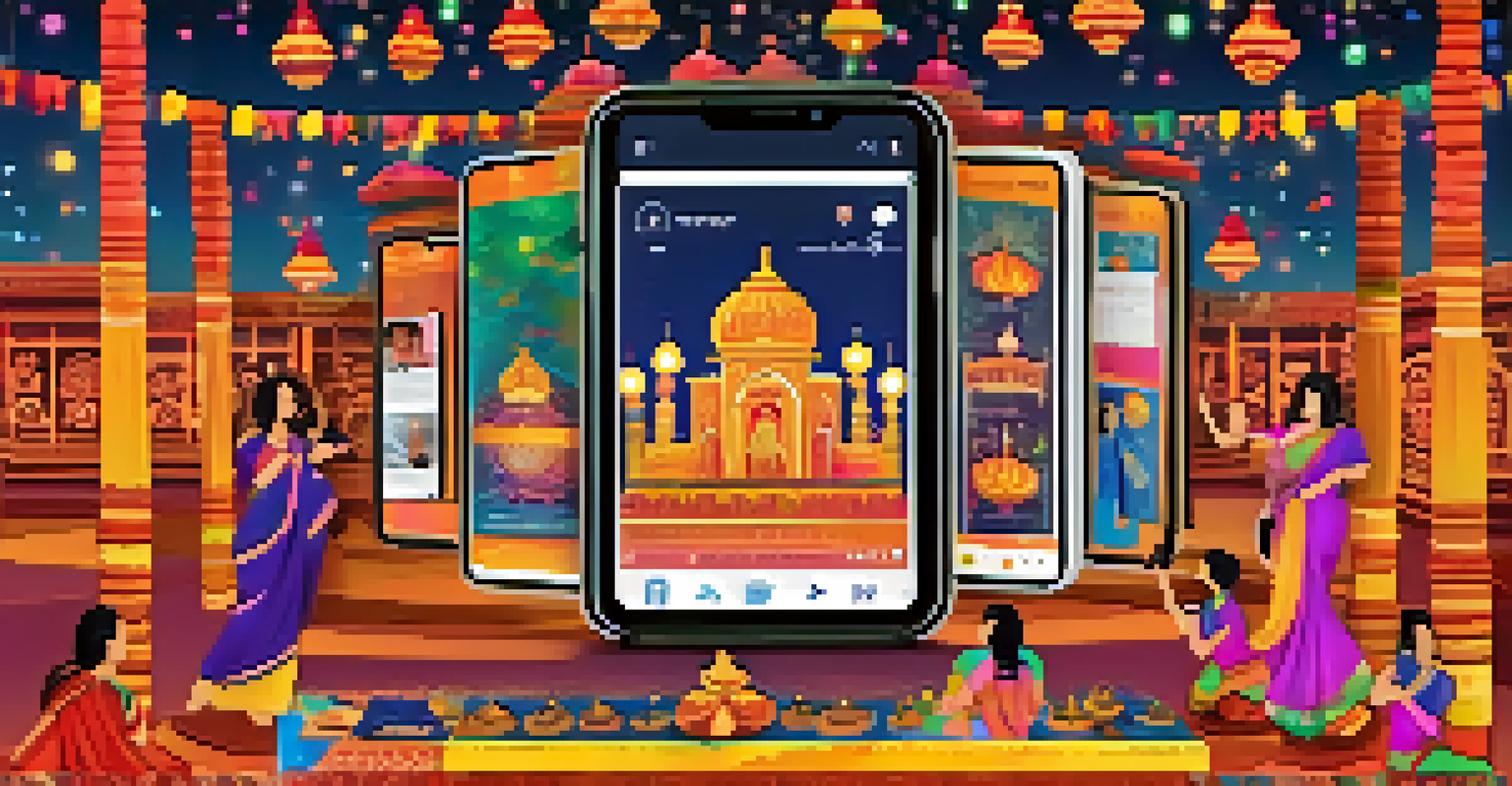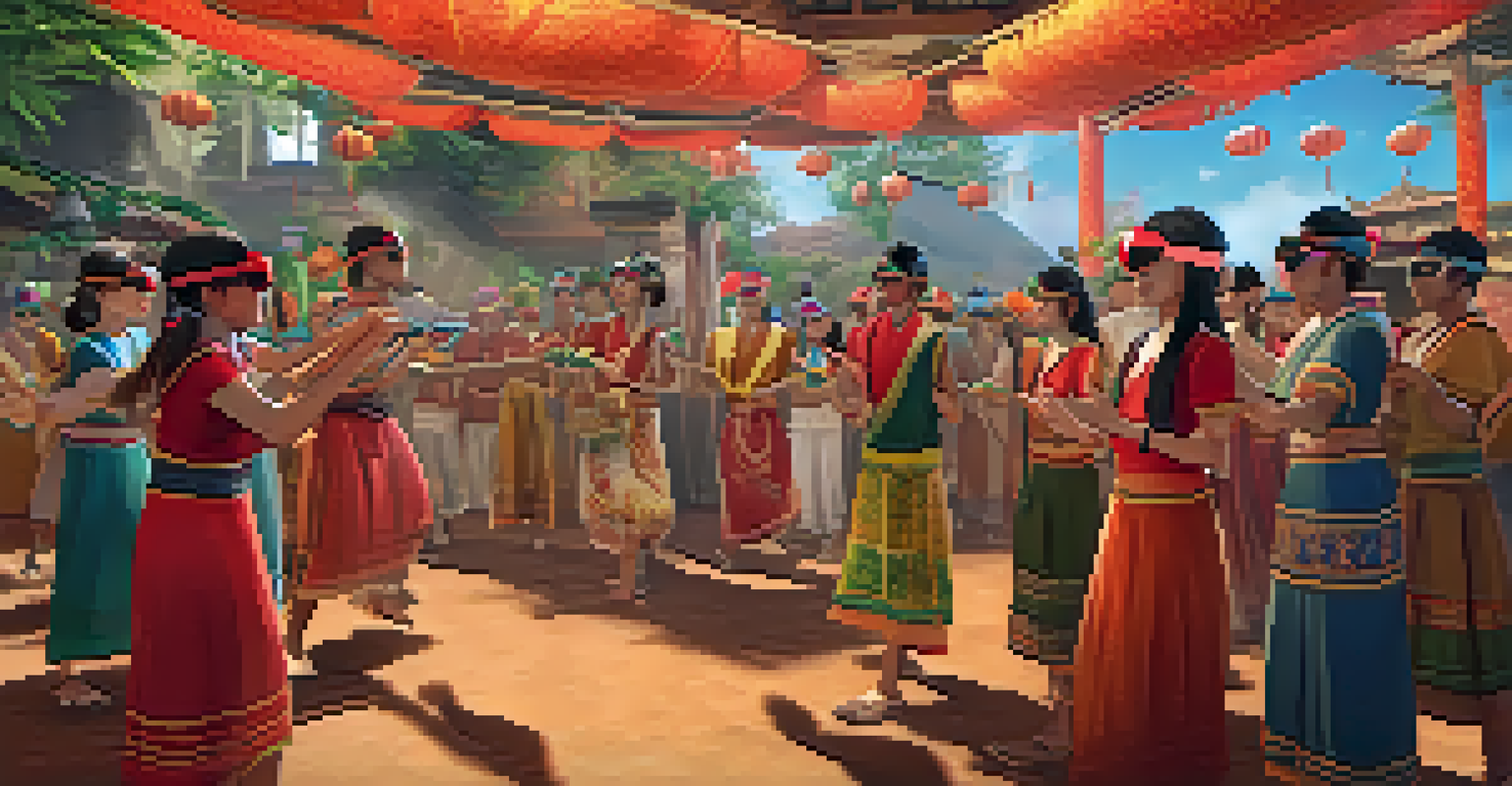The Role of Social Media in Culturally Inclusive Education

Understanding Culturally Inclusive Education
Culturally inclusive education focuses on recognizing and valuing diverse cultural backgrounds in the learning environment. This approach ensures that all students feel represented and respected, which enhances their overall educational experience. By integrating various cultural perspectives into the curriculum, educators can foster a sense of belonging among students.
Diversity and inclusivity are not just nice-to-haves; they are essential for creating a rich learning environment where all students can thrive.
One of the main goals of culturally inclusive education is to combat stereotypes and biases that often arise in traditional teaching methods. For instance, when students see their own cultures reflected in the curriculum, it not only boosts their self-esteem but also encourages empathy and understanding among peers. This inclusivity helps create a more harmonious classroom atmosphere.
Social media plays a pivotal role in this educational approach, acting as a bridge that connects diverse voices and perspectives. By leveraging platforms like Twitter, Instagram, and TikTok, educators can share resources and ideas that promote cultural awareness, making learning more relatable and engaging for all students.
Social Media as a Tool for Cultural Exchange
Social media platforms serve as powerful tools for cultural exchange among students and educators. They provide a space where users can share their experiences, traditions, and customs, fostering a greater understanding of different cultures. For example, a student in the U.S. can share their Diwali celebrations with peers across the globe, encouraging dialogue and curiosity.

Through hashtags and groups dedicated to specific cultural topics, learners can easily access a wealth of information and perspectives. This democratization of knowledge allows students to explore cultures beyond their own, promoting a more well-rounded educational experience. It can be as simple as following accounts that share cultural stories or participating in global discussions.
Embracing Cultural Diversity in Education
Culturally inclusive education enhances students' experiences by recognizing and valuing diverse cultural backgrounds.
Moreover, social media can break down geographical barriers, allowing students from diverse backgrounds to connect and collaborate on projects. This interaction not only enriches their learning but also helps students develop the essential skills of communication and collaboration in a multicultural world.
Enhancing Engagement Through Visual Storytelling
Visual storytelling on social media can significantly enhance engagement in culturally inclusive education. Platforms like Instagram and TikTok allow students to share their stories, traditions, and cultural practices through photos and videos. This creative expression can captivate classmates and spark meaningful discussions about cultural diversity.
Social media is a powerful tool for amplifying voices and connecting people across cultures and differences.
For instance, a student might create a short video showcasing a traditional dance from their culture, inviting peers to learn and participate. This interactive approach not only makes learning fun but also promotes respect and appreciation for different cultural backgrounds. Visual content can often convey emotions and ideas that words alone may struggle to express.
Furthermore, educators can use these platforms to highlight student contributions and cultural narratives, reinforcing the idea that every voice matters. By celebrating these diverse stories, schools can cultivate an environment where students feel empowered to share their identities and experiences, ultimately enriching the classroom dynamic.
Building Global Communities Through Social Media
Social media has the unique ability to build global communities that celebrate cultural diversity. Students can join groups or follow pages dedicated to specific cultural discussions, creating a sense of belonging and shared interest. This online camaraderie can lead to friendships that transcend borders and foster respect for different cultures.
For example, students interested in environmental issues can connect with peers from various countries, sharing how their cultures address sustainability. These interactions not only broaden their perspectives but also encourage collaborative problem-solving on global challenges. In this way, social media acts as a catalyst for cross-cultural understanding.
Social Media Enhances Cultural Exchange
Social media serves as a powerful tool for cultural exchange, allowing students to share and learn about different traditions and customs.
As these communities grow, they can instill a sense of responsibility in students to advocate for inclusivity and cultural appreciation. By participating in discussions and initiatives, students can take an active role in promoting diversity, helping to shape a more inclusive global society.
Addressing the Challenges of Social Media Use
While social media offers numerous benefits for culturally inclusive education, it also presents challenges that need addressing. Issues such as misinformation, cultural appropriation, and online bullying can hinder the positive impact of these platforms. Educators must be vigilant in guiding students on responsible usage and critical thinking.
For example, students should learn to differentiate between authentic cultural expressions and those that may perpetuate stereotypes or misrepresent cultures. Providing resources on cultural sensitivity can help students navigate these challenges and engage in respectful discussions. This educational aspect is crucial in ensuring that social media remains a positive tool for learning.
Moreover, creating a safe online environment where students feel comfortable sharing their stories is essential. Educators can implement guidelines for respectful interaction, encouraging students to support one another and celebrate their differences. This approach can help mitigate negative experiences and foster a more inclusive online community.
Promoting Equity in Educational Resources
Social media can play a significant role in promoting equity in educational resources. By sharing materials and resources that cater to diverse learning needs, educators can ensure that all students have access to quality education. Platforms like Facebook and LinkedIn allow teachers to connect and share best practices for culturally responsive teaching.
For instance, an educator might discover a resource on culturally relevant pedagogy shared by a colleague on social media. By adapting these resources to their teaching, they can better meet the needs of their students. This collaborative approach not only enhances individual teaching practices but also contributes to a collective effort toward inclusivity.
Navigating Social Media Challenges
While social media offers benefits for education, it also presents challenges like misinformation and online bullying that require careful management.
Additionally, social media can help raise awareness about educational disparities and advocate for change. By amplifying voices that discuss these issues, educators and students can work together to push for policies that promote equitable access to resources, ultimately benefiting all learners.
The Future of Social Media in Education
As technology continues to evolve, the role of social media in education is likely to expand further. New platforms and tools will emerge, providing even more opportunities for culturally inclusive learning. Educators must stay informed about these trends and be adaptable in their teaching methods to leverage these advancements effectively.
For instance, emerging technologies like virtual reality could offer immersive experiences that enhance cultural understanding and empathy. Imagine students exploring a traditional festival from another culture through a VR headset, allowing them to experience it firsthand. This type of engagement can deepen their appreciation for cultural diversity.

Looking ahead, it’s essential for educators to foster a culture of continuous learning and openness to new ideas. By embracing the potential of social media and technology, they can create vibrant, inclusive learning environments that celebrate cultural diversity and prepare students for a connected world.